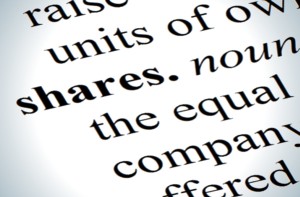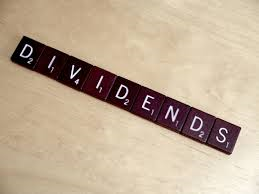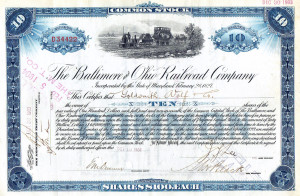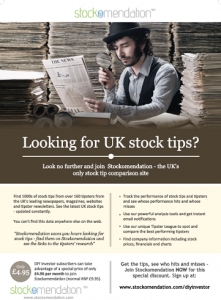Inside Equities
With virtually infinite choice in terms of company size, industry sector and geographic location, DIY Investor looks at some of the basics of investing in equities. When measured over a long time horizon, equities outperform most other asset classes, but when investing in individual stocks it is important that you know the basics of a balance sheet and pay due care and attention to spreading your exposure to risk until you are comfortable that you could tolerate the failure of one of the companies you choose. Whether you are searching for income or capital growth, there is content from experienced investors who explain some of the techniques they employ when evaluating a company and also articles from partners that have developed tools to  enable you to add some science to your stock picking.
enable you to add some science to your stock picking.
What are Equities?
Investors in equities – interchangeably, ‘stocks’, ‘shares’ or ‘securities’ – essentially buy a fraction of the company they have chosen. Companies come in all shapes and sizes but all will have shareholders; public companies will issue millions of shares that are bought and sold on the stock exchange every day. A large number of individual shareholders may own small stakes in a company, whereas large asset management companies, pension funds or insurance companies (institutional investors) may own a significant portion of a listed company. Public Limited Companies (PLCs) are limited liability vehicles which means that an individual cannot be held liable for losses that arise in excess of their investment; therefore, the potential downside of choosing to invest in a company that fails is the loss of your entire stake. More ‘liquid’ shares are readily traded on an exchange with tighter bid/offer spreads.  Read more
Read more
How to Value Shares
With such diversity in the size, structure and strategy of companies to choose from, how do you know that the share price you are being asked to pay is a reasonable reflection of the performance of the business and how do you make an ‘apples and apples’ comparison of companies that appear to be totally different? Perhaps of more interest to the stock-picker, how do you find companies that are currently undervalued and look to unlock a profit; unless you are looking to buy stocks for the certainty and magnitude of their dividends, the likelihood is that you are looking for that elusive diamond in a coal mine?  Read more
Read more
What is the FTSE 100?
We hear updated FTSE 100 figures quoted every day, but what actually is it, and why does it matter? FTSE 100 is an index comprising the most valuable, ‘blue chip’ companies listed on the London Stock Exchange and is seen as a barometer of the health of major companies in the UK and the wider UK economy. Started on 3rd January 1984, the FTSE 100 was jointly owned by the Financial Times and the LSE (hence FT and SE) and ‘100’ by virtue of the number of companies that it includes. The value of the FTSE 100 at launch was arbitrarily set at 1,000 which represented the combined value of the top companies on that day – say £100 billion. If a year later these companies were worth £200 billion the FTSE 100 index would be 2,000.  Read more
Read more
What Moves Equity Prices?
When a listed company updates investors on its performance and progress, a figure that is eagerly awaited and pawed over is its earnings figure. Sometimes known as the ‘attributable profit’, the company’s profit after tax is the amount it has made on behalf of its shareholders. The single biggest factor in moving a share price up or down is when a company announces that its future profits are now expected to be higher, or lower, than had previously been predicted, thus making its cumulative EPS target more, or less, achievable.  Read more
Read more
Income from Equities
Investing for income has come to the fore in the low interest environment that has existed in the UK for the best part of the last decade and all the more so since 2015 pension reform removed the requirement for those reaching retirement age to purchase an annuity. Companies tend to announce the dividend they are proposing to pay at the same time as they reveal their earnings figures. A metric for measuring and comparing the relative size of company dividends is the Dividend Yield which is the dividend as a percentage of the company’s share price. In a broader context, does the £100 you have invested in Acme Cleaning Co give you a better return than you could achieve from the more certain return of buying a bond or the absolute certainty of the interest earned in a savings account? If not, then that may not be a sound investment and even if it does pay you more, is the difference enough to warrant the additional risk of investing in a single stock?  Read more
Read more
Equity Share Classes
Most UK limited companies will have just one share class – sometimes ‘ordinary’, ‘common’ or ‘voting’ shares – but it is possible for a business to have two or more distinct groups of equities in existence at any one time. Ordinary shares are the most common form of share in the UK and ownership gives the right to its owner to share in the profits of the company, dividends, and to vote at its general meetings. It is called ‘ordinary’ stock to differentiate it from ‘preference’ stock which may be issued to founders or early investors in a business and may attract different benefits as a hybrid debt/equity instrument. In the event of liquidation, preference shareholders are subordinate to bondholders and creditors (including employees) but senior to ordinary shareholders in the pecking order when it comes to their claim on a company’s assets. Because of this hierarchy, holders of ordinary stock often get nothing in the event of a company going bankrupt; however, over time, ordinary shares tend to perform better than either preference shares or bonds in the market.  Read more
Read more
Save as You Earn and Share Investment Plans
Save as You Earn (SAYE) is a government scheme that helps people to buy shares in the company they work for, allowing them to save between £5 and £500 (tax year 2015/6) each month. Share Incentive Plans (SIP) allow employees to buy shares in their company in a tax efficient way or be gifted shares by their employer. For many this may be an introduction to share ownership in a low risk way and it comes with attendant benefits in terms of motivation and staff retention for the employer.  Read more
Read more
Preference Shares
Investing for income, sometimes ‘income investing’, is any investment that can generate a cash income in the form of dividends or interest payments. When applied to equity income investing this can mean looking for companies that pay regular and reliable dividends; the compounding effect of reinvesting these dividends can deliver solid long term returns. A source of predictable income are ‘fixed-income’ products, where the investor loans money to the government (gilts) or a company (corporate bonds) and in return receives guaranteed interest payments (coupons) for the duration of the loan; the size of the coupon reflects the level of risk that the borrower will not be able to repay the loan. Income investors attracted by the dividends that can be generated by shares, but reassured by the certainty of bonds, may consider a lesser known investment – preference shares – which offer some of the highest yields available to the DIY investor. Preference shares, or ‘prefs’, are a hybrid between an ordinary share and a corporate bond, and may represent an attractive opportunity for investors willing to spend a little time getting to grips with them. Along with shares and corporate bonds, preference shares are another way in which listed companies raise money, but they differ in terms of the rights an owner has in terms of being paid an income, and what happens if they are not. Preference shares are listed on the stock market, like ordinary shares, but differ in that they pay holders a fixed dividend, usually twice a year, just like the coupon paid on a bond.  Read more
Read more


 enable you to add some science to your stock picking.
enable you to add some science to your stock picking. 
















